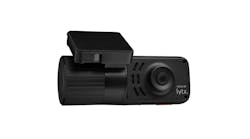Fleet and repair shops face particular challenges with energy consumption due to the high traffic in the facility, as well as the equipment used to service vehicles, observes Matt Armstrong with Noesis Energy (www.noesisenergy.com), an energy measurement and savings website that helps energy professionals to track energy usage and costs and create and measure energy projects to reduce costs. A two-part part strategy can immediately help to get a hold of energy costs.
1. Make sure the envelope is as sealed a possible.
This means that actuators on door closures are in working order, windows are double hung and tightly sealed and overhead natural lighting is used wherever possible in conjunction with functioning weatherstripping and other insulation elements.
2. Measure and analyze usage.
"Start measuring consumption and trending when there are peak days and times of energy usage," Armstrong says. "Having insight on to the general times of day when workloads increase can help with all sorts of things - from equipment maintenance to possible procurement strategies around demand reduction if the load base warrants."



